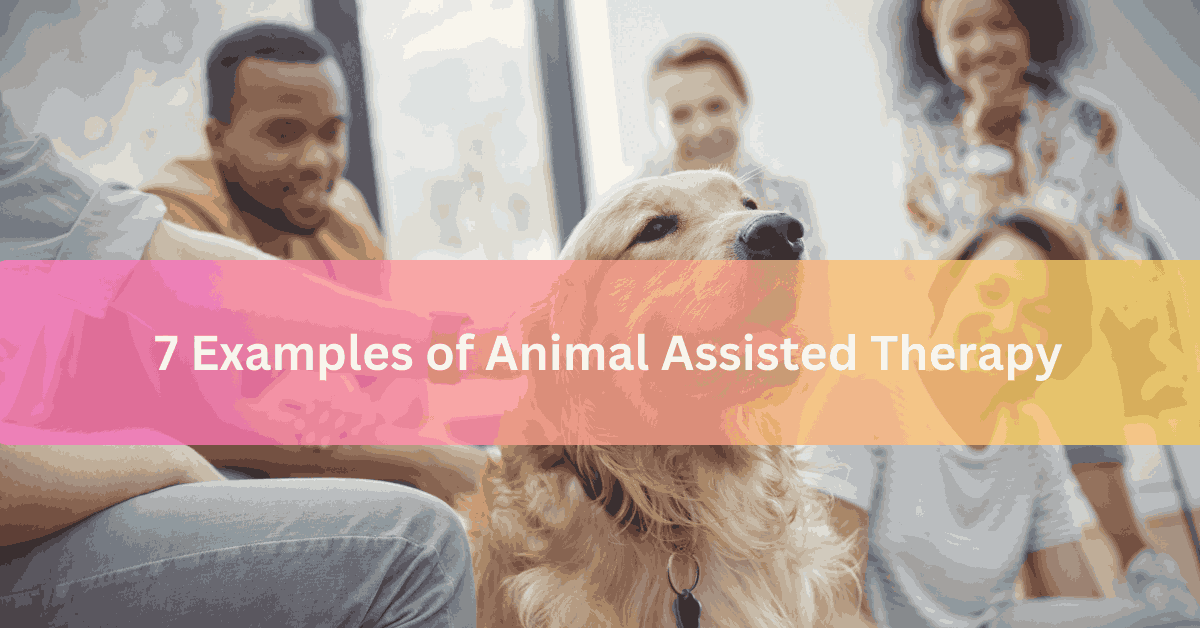7 Examples of Animal Assisted Therapy
Animal assisted therapy (AAT) is a dynamic approach in the field of mental and physical health that integrates animals into the healing process.
This approach is often combined with other mental health services, such as counseling or psychotherapy. It aims to reduce client stress levels, improve mood, and promote social interaction. Here are seven examples of animal assisted therapies:
1. Dogs
Dogs can be used for AAT because of their loyal and affectionate nature. They are typically known for providing emotional support, companionship, and unconditional love, which may be therapeutic for individuals dealing with depression, anxiety, and other mental health conditions.
Before a dog can visit clients for AAT, they must complete a training and certification program to enhance safety. This form of animal assisted therapy can be effective for individuals with autism, dementia, and schizophrenia.
2. Horses
Equine assisted therapy involves the use of horses in therapeutic practices. Interactions with these large, gentle animals may help individuals develop confidence, self-esteem, and responsibility. Equine-related AAT activities can include grooming, feeding, or walking the horse.
3. Felines
Felines can play a role in AAT with their calm and soothing presence. In settings such as nursing homes or hospitals, cats can help provide comfort and companionship to clients who miss their pets at home. Interacting with cats may lower blood pressure and reduce feelings of loneliness and depression.
4. Birds
Birds like parrots can mimic human speech and may respond to emotional cues, which can be therapeutic for individuals with communication difficulties or social anxiety. Caring for a bird may help instill a sense of responsibility and purpose, allowing participants to feed, talk, or engage in enrichment activities with them. Feeding chickens may also promote feelings of calm and contentment.
5. Aquatic Animals
Swimming with dolphins can have therapeutic effects, particularly for individuals with mental health disorders and developmental disabilities. Therapeutic riding helps promote improved motor functions in young and adult clients. Aquariums of fish can also create a calming environment for stressed individuals without requiring high engagement.
6. Rodents and Rabbits
Guinea pigs, hamsters, and rabbits typically exhibit a gentle and friendly nature. This makes them ideal for therapy sessions with children or individuals with anxiety. Petting or holding these small creatures may help reduce stress levels and improve mood. Caring for these animals can also teach responsibility and empathy, which are valuable life skills.
7. Nature-based AAT
Nature-based AAT involves interactions with wildlife in their natural habitats, which can be a transformative experience. These interactions can include activities such as bird watching or distanced encounters with gentle wildlife like deer. The natural encounters, quiet environment, and presence of fresh air may contribute to improved overall well-being.
Consider Animal Assisted Therapy
When combined with other approaches, AAT can provide different therapeutic benefits for individuals with mental heath conditions. It can assist in the healing process, offering comfort, companionship, and a unique form of interaction. AAT may decrease feelings of anxiety and loneliness, potentially improving overall well-being. If you’re struggling with mental health, consider adding animal assisted therapy to your current therapeutic process.

